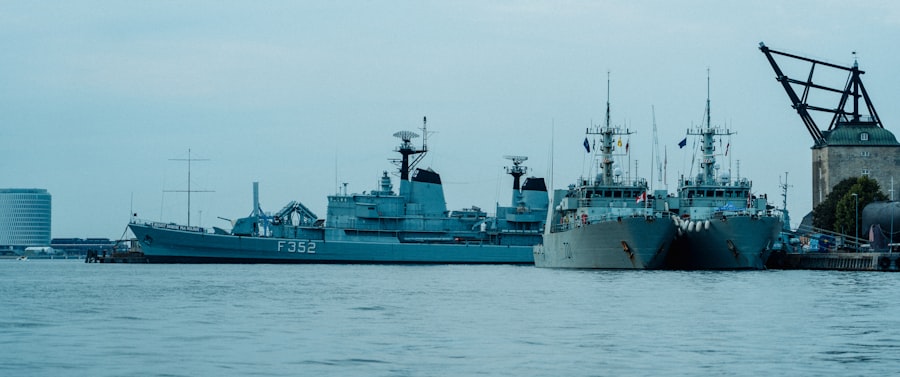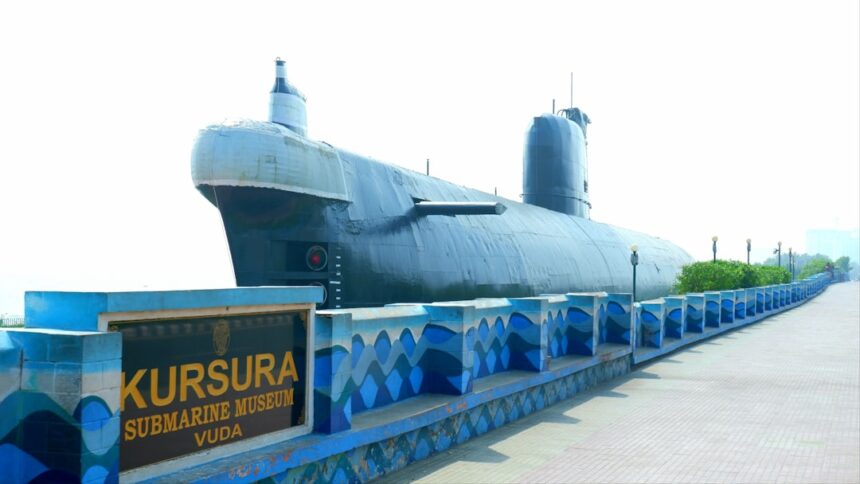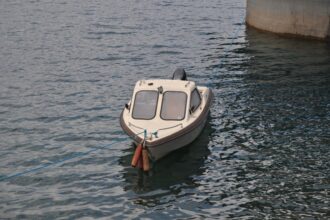The history of submarines in the United States is a tale of innovation, adaptation, and strategic necessity. The journey began in the late 19th century when the U.S. Navy commissioned its first submarine, the USS Holland, in 1900.
Designed by John Philip Holland, this vessel marked a significant departure from traditional naval warfare, introducing the concept of underwater combat. The Holland was a modest craft, powered by a gasoline engine and capable of submerging for short periods. Its commissioning signaled the beginning of a new era in naval warfare, one that would evolve dramatically over the ensuing decades.
As the world plunged into the chaos of World War I, the potential of submarines became increasingly apparent. The U.S. Navy expanded its submarine fleet, recognizing their strategic value in disrupting enemy supply lines.
By World War II, submarines had become a cornerstone of naval strategy, particularly in the Pacific Theater. The American fleet employed submarines to devastating effect against Japanese shipping, sinking thousands of tons of cargo and warships. This period solidified the submarine’s role as a formidable weapon in modern warfare, setting the stage for future advancements and operational strategies.
Key Takeaways
- US submarines have a long history dating back to the American Revolution, with the first successful submarine attack occurring during the Civil War.
- Submarine technology has evolved significantly, from early hand-cranked vessels to advanced nuclear-powered submarines capable of staying submerged for months at a time.
- Submarines play a crucial role in US national defense, providing a stealthy and powerful means of deterrence and surveillance.
- US submarines are equipped with advanced stealth and detection capabilities, making them highly effective in evading enemy detection and tracking.
- Nuclear power is the driving force behind US submarines, providing them with the ability to operate for extended periods without the need for refueling.
The Evolution of Submarine Technology
Submarine technology has undergone remarkable transformations since the inception of the USS Holland. Early submarines were limited by their design and capabilities, primarily relying on diesel engines for surface travel and battery power for submerged operations. However, as technological advancements emerged, so too did the capabilities of these underwater vessels.
The introduction of more sophisticated propulsion systems, such as nuclear power in the 1950s, revolutionized submarine design and operational range. This leap allowed submarines to remain submerged for extended periods without surfacing, fundamentally changing naval tactics. The evolution of sonar technology also played a crucial role in enhancing submarine effectiveness.
Initially reliant on rudimentary detection methods, submarines now utilize advanced sonar systems that can detect and classify underwater objects with remarkable precision. These advancements have not only improved the ability to locate enemy vessels but have also enhanced the stealth capabilities of submarines themselves. As technology continues to progress, the integration of artificial intelligence and machine learning into submarine systems promises to further refine operational efficiency and decision-making processes.
The Role of Submarines in US National Defense

Submarines play an integral role in the United States’ national defense strategy, serving as a critical component of deterrence and power projection. Their ability to operate undetected beneath the ocean’s surface allows them to gather intelligence, conduct surveillance, and engage in covert operations without revealing their presence. This stealth capability is particularly valuable in an era where information dominance is paramount.
By maintaining a fleet of advanced submarines, the U.S. can monitor potential adversaries and respond swiftly to emerging threats. Moreover, submarines serve as a vital element of nuclear deterrence.
The U.
Navy’s fleet of ballistic missile submarines (SSBNs) is designed to ensure a second-strike capability in the event of a nuclear attack. These submarines carry Trident II missiles, which can strike targets with high precision from vast distances while remaining hidden beneath the waves.
This strategic posture not only deters potential aggressors but also reassures allies of America’s commitment to collective security.
The Stealth and Detection Capabilities of US Submarines
| Submarine Class | Stealth Capabilities | Detection Capabilities |
|---|---|---|
| Virginia Class | Advanced acoustic silencing technology | Highly sensitive sonar systems |
| Ohio Class | Low acoustic signature | Effective counter-detection measures |
| Seawolf Class | Extreme quietness and speed | State-of-the-art sonar and radar systems |
The stealth capabilities of U.S.
Modern submarines are designed with advanced hull shapes and materials that minimize noise and reduce their radar cross-section.
This stealth technology enables them to evade detection by enemy sonar systems, making them formidable adversaries in naval engagements. The quiet operation of submarines is crucial for both offensive and defensive missions, as it allows them to gather intelligence without alerting potential targets. In addition to stealth, U.S.
submarines are equipped with sophisticated detection systems that enhance their situational awareness. Advanced sonar arrays can detect other vessels at great distances, providing critical information about enemy movements and activities. These systems are complemented by electronic warfare capabilities that allow submarines to intercept communications and gather intelligence on adversary operations.
The combination of stealth and detection technologies ensures that U.S. submarines remain at the forefront of naval warfare, capable of executing complex missions with precision.
The Nuclear Power Behind US Submarines
Nuclear power has been a game-changer for U.S. submarines since its introduction in the 1950s. The first nuclear-powered submarine, USS Nautilus, demonstrated the advantages of this technology by achieving unprecedented submerged speeds and endurance.
Unlike conventional diesel-electric submarines that require frequent surfacing for refueling, nuclear submarines can operate for years without needing to refuel, significantly extending their operational range and mission duration. The use of nuclear power also enhances the combat capabilities of submarines. With virtually unlimited endurance, these vessels can remain submerged for extended periods, allowing them to conduct prolonged surveillance or wait for optimal strike opportunities without revealing their position.
This capability is particularly advantageous in strategic deterrence roles, where maintaining a hidden presence is essential for effective deterrence against potential adversaries.
The Crew and Training of US Submarines

The crew aboard U.S. submarines is composed of highly trained individuals who undergo rigorous selection and training processes. Serving on a submarine requires not only technical expertise but also exceptional teamwork and adaptability due to the confined living conditions and high-stress environment.
Crew members are trained in various disciplines, including navigation, engineering, weapons systems, and emergency procedures, ensuring they can respond effectively to any situation that may arise during operations. Training for submarine crews is comprehensive and continuous. New recruits undergo extensive schooling at specialized training facilities before joining their assigned vessels.
Once aboard, they participate in simulated drills that replicate real-world scenarios, honing their skills in navigation, combat operations, and emergency response. This emphasis on training ensures that crew members are well-prepared for the challenges they may face while deployed at sea.
The Missions and Operations of US Submarines
U.S. submarines are tasked with a diverse array of missions that extend beyond traditional combat roles. While they are equipped for offensive operations against enemy vessels and installations, they also play crucial roles in intelligence gathering, reconnaissance, and special operations support.
Submarines can covertly insert special forces into hostile territories or conduct surveillance missions to gather critical information about enemy activities. In addition to these tactical missions, U.S. submarines contribute to broader strategic objectives by participating in joint exercises with allied navies and conducting presence operations in key regions around the world.
These operations demonstrate U.S. commitment to global security and stability while providing valuable training opportunities for crews to enhance their readiness for future conflicts.
The Strategic Importance of US Submarines
The strategic importance of U.S. submarines cannot be overstated; they serve as a cornerstone of American military power and deterrence strategy. Their ability to operate undetected allows them to project power across vast distances while maintaining a credible threat against potential adversaries.
This capability is particularly vital in regions where traditional military assets may be limited or vulnerable to attack. Furthermore, U.S. submarines play a crucial role in maintaining alliances and partnerships with other nations.
By participating in joint exercises and operations with allied navies, they foster interoperability and strengthen collective security arrangements. This collaborative approach enhances regional stability and deters aggression from adversarial states.
The Future of US Submarine Technology
As technology continues to advance at an unprecedented pace, the future of U.S. submarine technology looks promising yet challenging. Ongoing research and development efforts focus on integrating cutting-edge technologies such as artificial intelligence, unmanned systems, and advanced materials into submarine design and operations.
These innovations aim to enhance situational awareness, improve decision-making processes, and increase overall operational effectiveness. Moreover, as geopolitical dynamics shift and new threats emerge, the U.S. Navy is exploring new concepts for submarine warfare that leverage these technological advancements.
This includes developing next-generation submarines that can operate seamlessly within multi-domain environments while maintaining their stealth advantages. The future of U.S. submarines will likely involve a combination of traditional capabilities enhanced by modern technology to address evolving security challenges.
The Challenges and Risks Faced by US Submarines
Despite their formidable capabilities, U.S. submarines face numerous challenges and risks in an increasingly complex global security environment. One significant challenge is the proliferation of advanced anti-submarine warfare (ASW) technologies among potential adversaries.
Countries such as Russia and China have invested heavily in developing sophisticated sonar systems, underwater drones, and anti-submarine missiles designed to detect and target submarines effectively. Additionally, operating in contested environments poses inherent risks for U.S. submarines.
As tensions rise in regions like the South China Sea or Eastern Europe, the likelihood of confrontations increases, necessitating careful navigation through politically sensitive waters while maintaining operational readiness. Balancing these risks with mission objectives requires constant vigilance and adaptability from submarine crews.
The Global Impact of the US Submarine Fleet
The global impact of the U.S. submarine fleet extends far beyond its immediate military capabilities; it shapes international relations and influences global security dynamics. By maintaining a robust submarine presence around the world, the United States demonstrates its commitment to deterring aggression and promoting stability in key regions.
This presence reassures allies while sending clear signals to potential adversaries regarding America’s resolve. Moreover, U.S. submarines contribute significantly to humanitarian efforts during crises such as natural disasters or humanitarian emergencies by providing logistical support or conducting search-and-rescue operations from remote locations.
This multifaceted role underscores the importance of submarines not only as instruments of war but also as tools for diplomacy and international cooperation in addressing global challenges. In conclusion, U.S. submarines represent a vital component of national defense strategy with a rich history marked by technological evolution and strategic significance.
As they continue to adapt to emerging threats while leveraging advanced technologies for future operations, their role will remain crucial in shaping global security dynamics for years to come.
In exploring the intriguing world of the US submarine fleet, one might find it beneficial to delve into related topics that provide a broader understanding of naval operations and military strategy. A particularly insightful article can be found on the website “In The War Room,” which offers a comprehensive look at various aspects of military technology and tactics. For those interested in expanding their knowledge beyond the secrets of the submarine fleet, I recommend reading this related article available at In The War Room. This resource provides valuable context and additional information that complements the intricate details of submarine operations.
WATCH THIS! America’s Nuclear Navy Was Born From Espionage
FAQs
What is the US submarine fleet?
The US submarine fleet is a collection of submarines operated by the United States Navy. These submarines are used for various purposes including intelligence gathering, surveillance, and strategic deterrence.
How many submarines are in the US fleet?
As of 2021, the US submarine fleet consists of around 70 submarines, including both nuclear-powered and diesel-electric submarines.
What are the capabilities of US submarines?
US submarines are equipped with advanced technology and weaponry, allowing them to operate covertly and effectively in various environments. They are capable of launching ballistic missiles, conducting intelligence gathering missions, and engaging in anti-submarine warfare.
What are some of the key missions of the US submarine fleet?
The US submarine fleet is tasked with a range of missions, including strategic deterrence, intelligence gathering, surveillance, and support for special operations forces. They also play a crucial role in maintaining the US Navy’s global presence.
How does the US submarine fleet contribute to national security?
The US submarine fleet provides a critical component of the nation’s nuclear deterrent, as well as the ability to project power and influence in key regions around the world. Their stealth and covert capabilities make them a valuable asset for national security.
What are some of the challenges faced by the US submarine fleet?
Challenges faced by the US submarine fleet include maintaining technological superiority, ensuring the readiness of the fleet, and addressing potential threats from adversaries who are also investing in submarine capabilities. Additionally, there are ongoing challenges related to budget constraints and the need for modernization.




